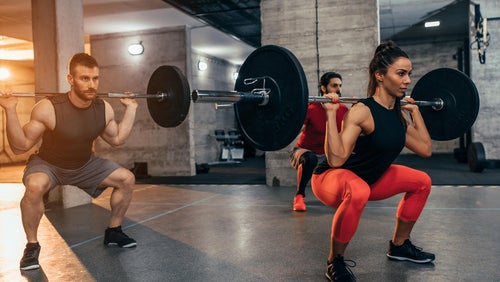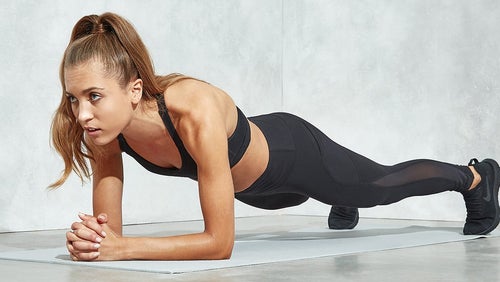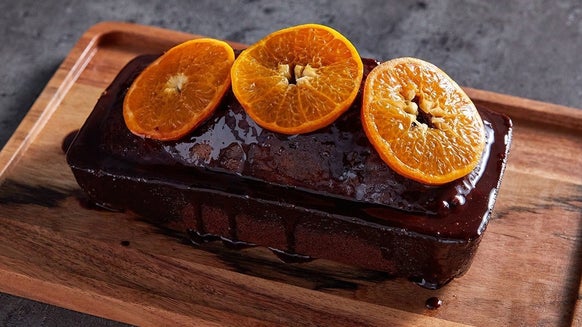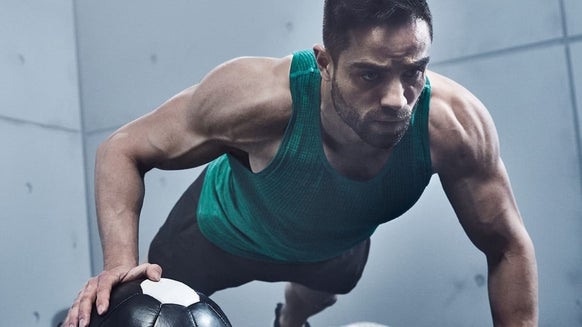At-Home Athletes | Get The Most Out Of Your Home Training

While you can’t get to the gym, or train with the team right now, it’s important to stay on top of your game so that when you can, you’re firing on all cylinders.
This means taking charge of your diet and training to get the most you can out of the current at-home training situation.
We want to help you become the healthiest, happiest, most athletic version of you yet. We aim to help you achieve that with our “At home Athletes” series.
In this week’s article we’re going to be discussing exercise and how you can adapt it to get the most out of your home workouts.

Setting realistic exercise goals
Before we can even dive into how to adapt your training, we first need to discuss the importance of realistic goal setting. Let’s be honest, there’d be no point in us helping you figure out the best way to max out on your deadlifts if you’re home workout kit consists of furniture and a token resistance band.
Having a goal that isn’t achievable can really impact motivation and self-belief.
Taking a “smart” approach to goal setting may be what you’re looking for...
S.M.A.R.T goals are those which are based on the following:
S - Specific M - Measurable A - Attainable R - Realistic T - Time-Bound1
This principle can span across all aspects of your life — career goals, fitness goals, personal goals, financial goals etc. are just a few examples. The S.M.A.R.T principle is equally as useful when considering a long-term goal or if your focus is more so on short-term goals.
Try our goal-setting worksheet to set your own goals.
Start here and then move on to the adaptations you can make to get the most out of your training at home.
What is athleticism?
Understanding the components of athleticism is important for setting goals and knowing what we can realistically focus on and or change to progress across these domains.
The National Strength and Conditioning Association defines athleticism as “Athleticism is the ability to repeatedly perform a range of movements with precision and confidence in a variety of environments, which require competent levels of motor skills, strength, power, speed, agility, balance, coordination, and endurance.”2
Of these, the components of athleticism we can realistically focus on at home are strength, power and endurance. There are ways to incorporate the others which we’ll touch on too!
Strength & Power
Strength can be defined as the ability to exert force in order to overcome resistance. Power is the sum of force multiplied by distance divided by time. In an athletic context, the two are virtually always intertwined.3 If you have more muscular strength, you can produce more power and the more power you can produce the more maximal a loadyou may be able to move.
So, the goal should be to include more movements in our training at home that help us develop muscular strength and power.
Starting with strength, improvements can be made with neuromuscular work and increasing muscle size. Most of us won’t have access to equipment that will allow us to focus on neuromuscular work (which is essentially max-effort work), so hypertrophy (muscle building) should be your goal here.
Muscular hypertrophy is thought to be achieved by three key mechanisms — mechanical tension (resistance applied to the muscle), metabolic stress (“burning” feeling associated with metabolite accumulation) and muscle damage (micro tears in muscle tissue which occur with training).4
Achieving this at home
There’s limited opportunity to increase mechanical tension at home (especially if kit is limited). You could experiment with some bodyweight movements, changing the levers and making them more difficult (like incline push ups for example) or add something like a resistance band to these movements to increase tension and difficulty.
More of the focus should be shifted towards metabolic stress and muscle damage.
Simple ways to increase metabolic stress are reducing rest times, going to failure, or incorporating more sets involving more than one movement. Repeated work like this with little rest leads to a build-up of metabolites within the working muscle. The metabolic stress placed on the muscle has an anabolic (muscle building) effect (via molecular signalling and an increasing hormonal response) which can drive muscle hypertrophy.
Alternatives
You may also want to look into blood flow restriction (BFR) training. Similar to reduced rest, work to failure and increased number of movements one after another, BFR leads to greater accumulation of metabolites and therefore metabolic stress. It has been shown to preserve lean muscle mass and even increase muscular hypertrophy. To perform BFR training you simply need to apply pressure to the muscle you’re working (typically using a tourniquet) and then use a very light load and work to close to failure.
Speaking of, working to failure is also a great way of increasing muscle damage. However, the best way to increase muscle damage is to focus on the eccentric portion of the movement (the lengthening / stretching of the muscle).5 One simple tip here, slow down. Incorporate counts into the stretching portion of the movement to accentuate the eccentric half of the rep.
Endurance
When we’re discussing endurance, we’re really looking at increasing the number of reps you can perform or, if you’re viewing it through the lens of endurance style exercise, how long you can go for and what pace you can maintain.
This means what you’re working towards is overall fitness or, more accurately, cardiovascular fitness and muscular endurance.
Being fitter means that we can work for longer, at a higher rate and recover faster.6
Training and exercise provoke widespread changes across our body. Cells, tissues and organs all adapt to meet the increased metabolic demand.7 These changes lead to improvements in oxygen delivery, nutrient and waste transport, energy production and more.8 Exercise also promotes adaptations to the cardiovascular system as well.9
Achieving this at home
So, how do we adapt our training at home to improve our endurance? Well, studies show that cardiovascular function can be improved by just about any form of aerobic exercise that falls within a range of intensities (from 50 to 95% VO2).10 This could be walking, a light jog, a few up and downs of the staircase or even just some bodyweight-based circuit training.
You’re limited only by your imagination here. If you’re struggling on the imagination front however, firing up a bodyweight workout from your favourite Instagram or YouTube channel may help you get your butt in gear and increase the likelihood of you doing those burpees that you’ve been planning to do now for the past several weeks.
That’s more so improving overall fitness but what about muscular endurance? If you’re aiming to improve that, then one of the best ways to improve muscular endurance is through using superset and circuit-based training.11 There’s a lot of crossover with exercise training and its benefits; with this style of training its likely you’ll be getting stronger and more powerful too.
The other components of athleticism
Awesome, so we’ve ticked off the major players in strength, power and endurance. What’s left? Speed, agility, balance and coordination. Let’s have a quick overview of each and what you can be doing at home to be moving forward with these too!
Speed
This is actually a bit of a gimmee as you’ll already be ticking the speed box simply by keeping up your resistance-based training. Yes, the best way for athletes to get quicker (outside of practicing that which you want to get quicker at) is resistance training.12 Is there anything making gains can’t solve?
Agility
Agility is a tough one. We’re just going to assume most of you don’t have agility ladders and cones sitting around your house. Agility is, more or less, how rapidly you can get your body to react to a stimulus.13
Assuming the weather will be picking up soon, you may want to take yourself outside for this one (or risk breaking windows). Racket sport players actually have some of the highest agility scores amongst athletes and so picking up a tennis racket and getting outside to meet a friend for some socially distanced training can help you up your agility game!14
Balance & coordination
A sneaky great way of improving balance and coordination in one fell swoop is picking up a skipping rope and incorporating this into your training.15
Other ways of improving coordination and balance are honing in on your core training (incorporating more planks for example and other core work) as well as direct balance training (such as balancing on one leg or more advanced training techniques like pistol squats and or one-legged jumps).16,17
Take home message
Is training going to be more challenging now given the lack of equipment and the fact that our gym leggings and tank tops have been replaced by the slightly less motivating sight of all-day pyjamas? Yes.
Does that mean that we can’t progress towards being better athletes? Absolutely not. Hopefully this has been helpful and given you some useful insights into how you can adapt your training to still look to move forward.
Lockdown isn’t forever, but we should make the most of our time and still focus on what we can do and what we can control. You can still move forward as an athlete — you just have to know where to put your energy.
READ THIS NEXT:

15 Minute Workouts for Any Occasion
Too busy to exercise? All you need is 15-minutes a day!

10 Supplements To Help Fight Tiredness and Fatigue
Want to feel full of life? These supplements could be the answer.






